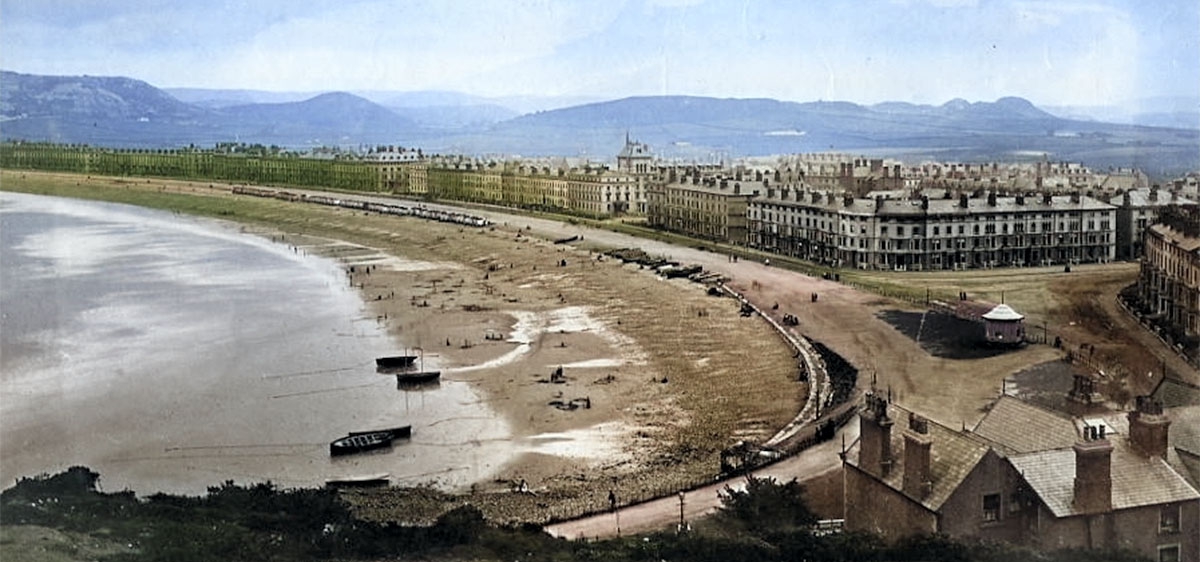
Hanes yr Ardal Weinidogaethol
Daeth Cristnogaeth i ardal y Gogarth yn y chweched ganrif pan sefydlodd Sant Tudno ei llan yma. Yn y canol oesoedd, roedd tri anheddiad ar y penrhyn: y Cyngreawdr amaethyddol i’r gogledd a oedd yn cynnwys Eglwys Sant Tudno (mae’r adeilad presennol yn dyddio o’r 12fed ganrif); Yr Wyddfid yn y de-ddwyrain islaw bryngaer Pen-y-Dynas; a'r Gogarth i'r de-orllewin. Yn y flwyddyn 1284, rhoddodd y Brenin Edward I Faenor y Gogarth, a oedd yn cynnwys y tri anheddiad hyn, i Anian, Esgob Bangor, a daeth Gogarth yn lleoliad palas Esgob Bangor.
Ar y pryd, ynys oedd y Gogarth fwy neu lai, wedi'i gwahanu oddi wrth y tir mawr gan lain o forfa heli. Teithiodd yr esgobion a'u gorymdeithiau rhwng gweddill yr esgobaeth a'r palas mewn cwch. Llosgwyd y palas yn ulw gan Owain Glyndwr yn 1400. Mae erydiad arfordirol Aber Conwy wedi dinistrio llawer o'r palas a hen anheddiad y Gogarth.

Arhosodd eglwys Sant Tudno yn eglwys y plwyf ymhell i’r 19eg ganrif. Fodd bynnag, ym 1839, difrodwyd yr eglwys yn ddifrifol mewn storm ac adeiladwyd eglwys newydd, San Siôr, ar lethrau isaf y Gogarth ym 1840. Er i eglwys Sant Tudno gael ei hailadeiladu, statws eglwys y plwyf oedd eglwys y plwyf. trosglwyddo i St. George's yn 1862.
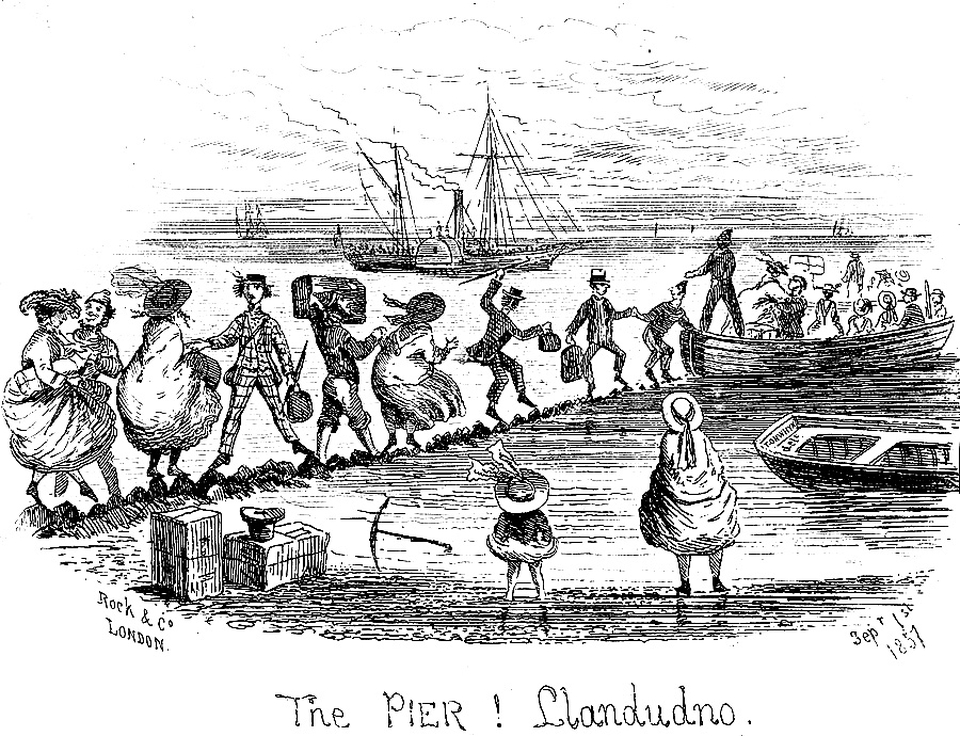
Yn y cyfamser, roedd yn dod yn amlwg iawn bod Eglwysi Sant Tudno ac Eglwys San Siôr yn annigonol ar gyfer y llu o ymwelwyr a oedd yn dechrau mynd ar wyliau yn nhref ddatblygol Llandudno. Ateb cychwynnol oedd trwyddedu Ysgol San Siôr ar gyfer gwasanaethau, a rhyngddynt, cynhelid wyth gwasanaeth bob Sul. Fodd bynnag, roedd hyn hyd yn oed yn annigonol, felly penderfynwyd adeiladu Eglwys y Drindod Sanctaidd ar gyfer y nifer cynyddol o ymwelwyr a gosodwyd ei chonglfaen ym 1865.
Wrth i'r tir rhwng y Gogarth a'r tir mawr gael ei adennill, bu'n rhaid penderfynu ar fater ffin y plwyf a'r esgobaeth (gyda Phlwyf Llanrhos ac Esgobaeth Llanelwy). I ddechrau, roedd ffin y plwyf yn rhedeg trwy'r llain o dir a roddwyd gan deulu Mostyn ar gyfer Eglwys y Drindod Sanctaidd.
Adeiladwyd eglwys ychwanegol, Eglwys Ein Gwaredwr, ar Ben Morfa yn 1911. Rhoddodd newid ffin y plwyf i lein ar hyd Vaughan Street a’r rheilffordd eglwys arall i’r plwyf, eglwys genhadol “tun”, yn y Drindod Rhodfa o'r enw Sant Andreas. Caewyd hon pan adeiladwyd neuadd eglwys yn Eglwys Ein Gwaredwr. Roedd Ysgol Sant Bueno hefyd wedi'i thrwyddedu ar gyfer gwasanaethau.
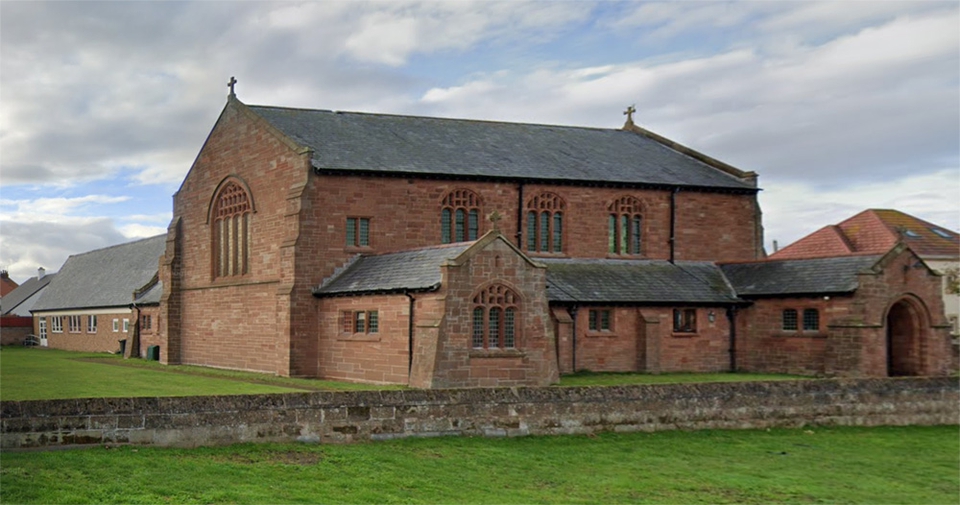
Erbyn y flwyddyn 2000, roedd pedair eglwys yn y plwyf – Eglwys y Plwyf San Siôr, Eglwys Sant Tudno, Eglwys y Drindod Sanctaidd ac Eglwys Ein Gwaredwr. Ar ôl cyfnod hir o ymgynghori, caewyd Eglwys San Siôr ac Eglwys Ein Gwaredwr yn 2002. Daeth Eglwys y Drindod Sanctaidd yn eglwys y plwyf wedyn a dathlwyd 150 mlwyddiant gosod ei charreg sylfaen yn 2015. Yn 2018 daeth statws y newidiwyd y plwyf o Fywoliaeth Reithorol i Ardal Weinidogaethol, gan roi statws cyfartal i Eglwysi'r Drindod Sanctaidd ac Eglwysi Sant Tudno.
History of the Ministry Area
Christianity came to the area of the Great Orme in the sixth century when St. Tudno established his llan here. In mediaeval times, there were three settlements on the peninsula: the agricultural Y Cyngreawdr to the north that included St. Tudno’s Church (the present building dates from the 12th century); Yr Wyddfid in the south-east below the fort-hill of Pen-y-Dynas; and Y Gogarth to the south-west. In the year 1284, King Edward I gave the Manor of Gogarth, which included these three settlements, to Anian, the Bishop of Bangor, and Gogarth became the location of the palace of the Bishops of Bangor.
At the time, the Great Orme was virtually an island, separated from mainland by a strip of saltmarsh. The bishops and their entourages travelled between the rest of the diocese and the palace by boat. The palace was burnt down by Owain Glyndwr in 1400. Coastal erosion of the Conwy Estuary has destroyed much of the palace and the old settlement of Gogarth.
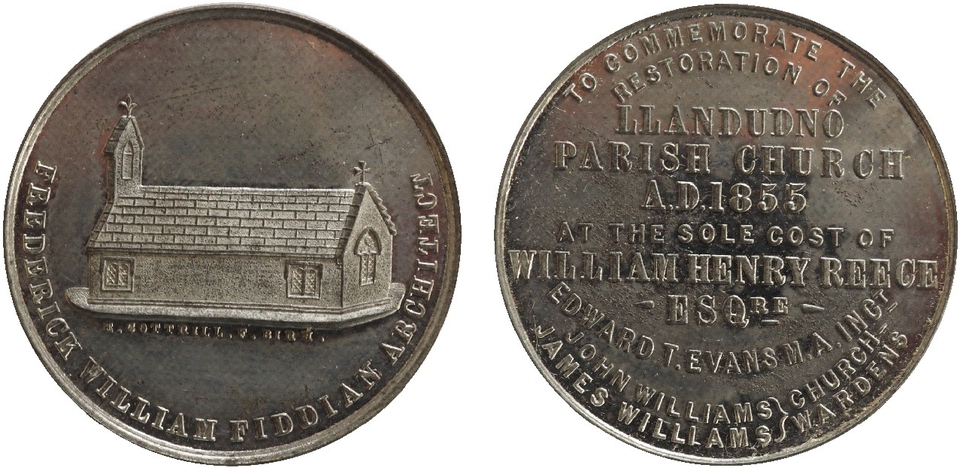
St. Tudno’s remained the parish church well into the 19th century. However, in 1839, the church was severely damaged in a storm and a new church, St. George’s, on the lower slopes of the Great Orme was built in 1840. Although St. Tudno’s church was rebuilt, the status of the parish church was transferred to St. George’s in 1862.
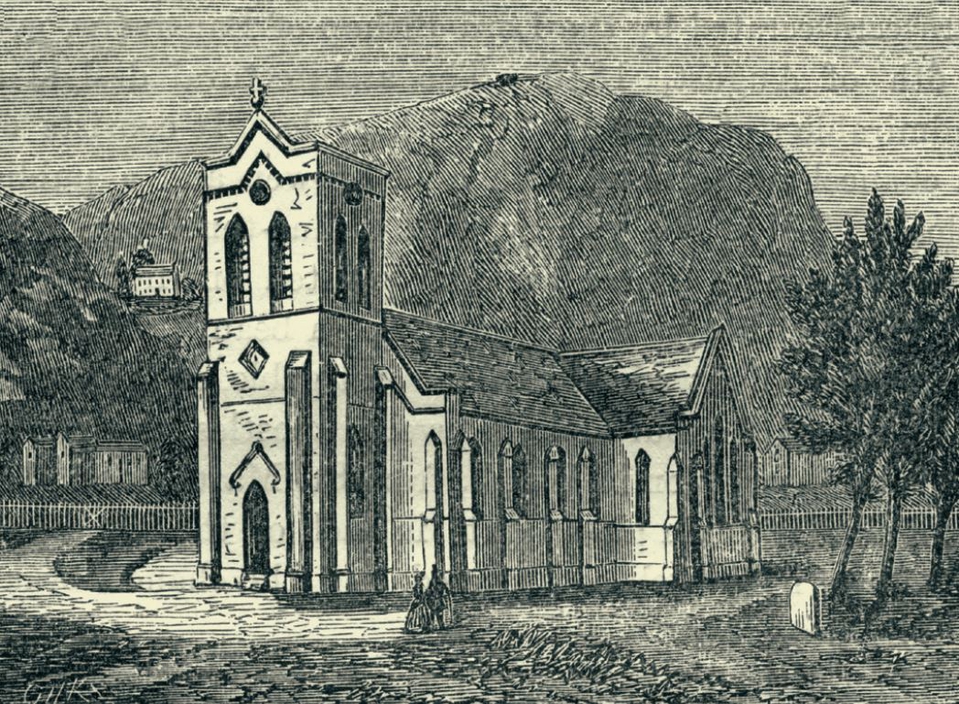
Meanwhile, it was becoming very clear that both St. Tudno's and St. George’s Churches were inadequate for the hosts of visitors that were beginning to holiday in the developing town of Llandudno. An initial solution was to license St. George’s School for services, and between them, eight services every Sunday were held. However even this proved inadequate, so it was decided to build Holy Trinity Church for the increasing number of visitors and its cornerstone was laid in 1865.
As the land between the Great Orme and the mainland was reclaimed, the issue of the parish and diocesan boundary (with Llanrhos Parish and St. Asaph Diocese) had to be determined. Initially, the parish boundary ran through the plot of land given by the Mostyn family for Holy Trinity Church.
An additional church, the Church of Our Saviour, was built on the West Shore in 1911. A change in the parish boundary to a line along Vaughan Street and the railway line gave the parish another church, a “tin” mission church, in Trinity Avenue called St. Andrew’s. This was closed when a church hall was built at the Church of Our Saviour. St. Bueno’s School was also licensed for services.
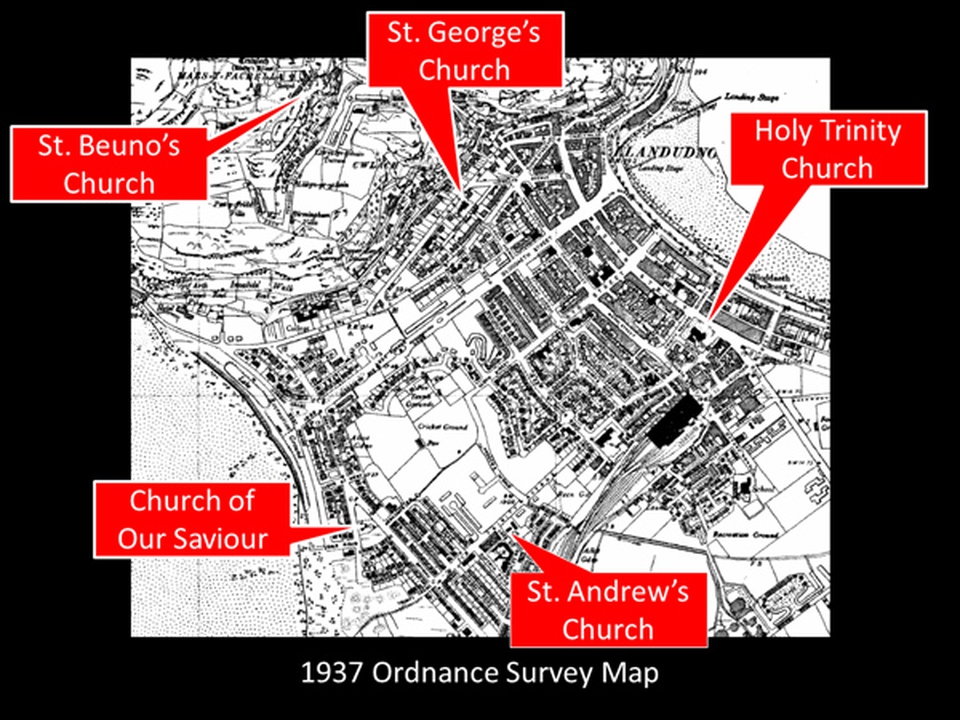
By the year 2000, there were four churches in the parish – St. George’s Parish Church, St. Tudno’s Church, Holy Trinity Church and the Church of Our Saviour. After a long consultation period, St. George’s Church and the Church of Our Saviour were closed in 2002. Holy Trinity Church then became the parish church and the 150th Anniversary of the laying of its foundation stone was celebrated in 2015. In 2018 the status of the parish was changed from a Rectorial Benefice to a Ministry Area, giving Holy Trinity and St. Tudno’s Churches equal status.
